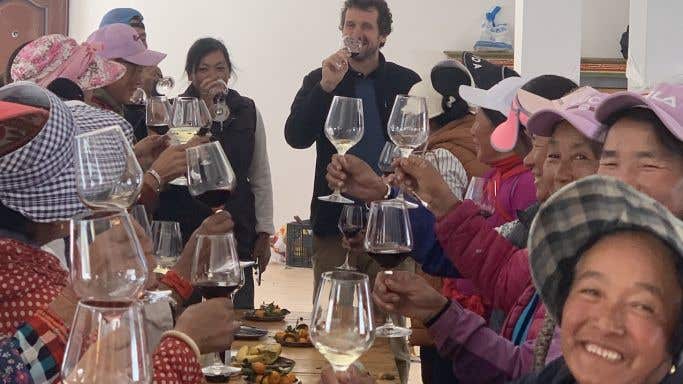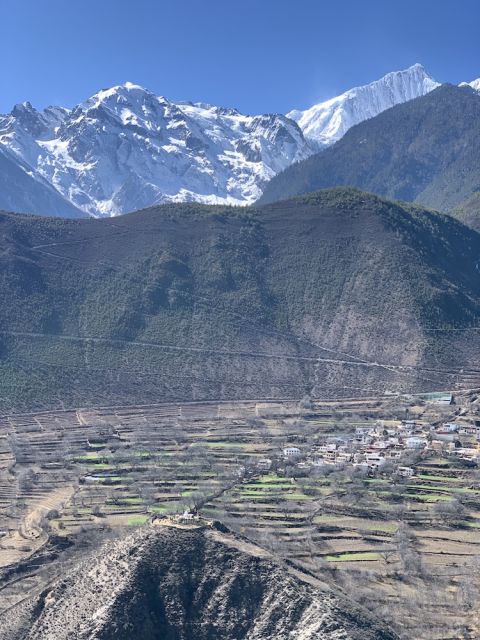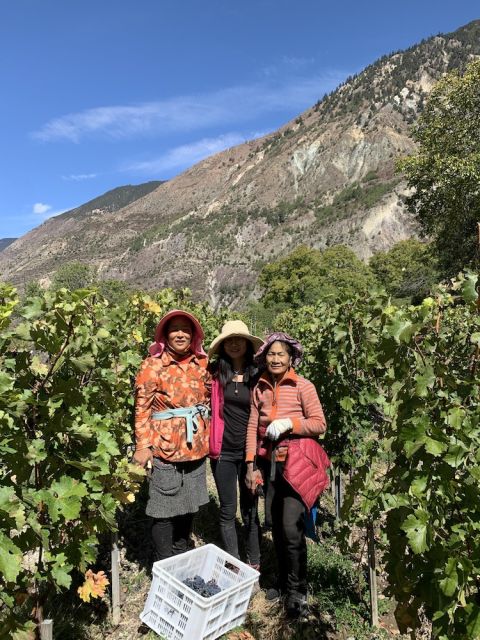A shorter version of this article is published by the Financial Times. At the end of this article are 23 wines from all over the world that in my view would represent much better value.
Would you pay more than £100 for a bottle of Chinese wine? In the current political climate, perhaps not. You would therefore presumably be unlikely to shell out for either of the ambitiously priced Chinese wines being launched so hopefully in the UK this month – although one was made by an Austrian and one by a Frenchman.
In a way, the roots of both wines are Australian, put down long ago when Sino-Australian relations were very much more cordial than they are today. Tony Jordan was a hugely admired wine consultant based outside Melbourne. He established Moët & Chandon’s Australian sparkling-wine operation and in 2008 and was charged by the parent company LVMH to find the ideal spot in China to produce the wine style favoured by the Chinese: a copy of red bordeaux.
It wasn’t easy. Vines have to buried in winter in most Chinese regions to save them from fatal freeze, and they don’t take kindly to it. The east coast is milder but has been subject to ill-timed monsoons that play havoc with the grape crop. It took Jordan four years’ searching and detailed analysis to find one of the most improbable settings for viticulture in the world: on precipitous slopes at 2,500 m (8,200 ft) elevation in the upper reaches of the Mekong Valley in Yunnan province in the far south of the country, almost on the Tibetan border, overlooked by the Himalayas.
Winters are warm enough here to avoid the annual vine burial, and the climate is dry. Tony Jordan died last year, far too early and much lamented. I thought of him as I tasted the last two vintages, 2015 and 2016, of Ao Yun, the Bordeaux blend that has resulted from his Chinese researches.
Gascon Maxence Dulou, seen in our main picture at the head of a celebratory table at the winery, is the man in charge of making Ao Yun. I met him and his family in Yunnan in 2014 before the wine had even been launched. They lived in the only town of any size in the region, now called Shangri-La, four hours’ drive from the winery. For the sake of the children’s education they have since moved to Hong Kong, so Dulou’s commute to the winery now takes a day a half. But he could not be more passionate about the enterprise. See more details about this exceptional enterprise, some of whose vineyard workers are seen below, in China's new wine frontier and A French battle for China's first great red.
Ao Yun have a total of 28 ha (70 acres) of vines in several different villages (half planted, ungrafted, in 2000 and half, denser-planted on rootstocks, between 2013 and 2015, including some Merlot as well as Petit Verdot and Shiraz. They have recently leased a further 3.5 ha to be planted over the next two years.
This is by no means the only wine enterprise here. Dulou reports there are probably 350 ha (865 acres) of vineyard in total, in a wide variety of locations. Bordelais Patrick Valette, once associated with Ch Berliquet and more recently with VIK in Chile, is apparently starting a project for some Chinese brothers here, with local government support.
On a phone call from Hong Kong as I tasted the latest vintage and compared it with the previous one, Dulou was obviously supremely proud of his latest baby. In 2016 for the first time they had subdivided their 28 ha (69 acres) of vineyard into 900 blocks by soil type, water retention and location so that they could be sure of pruning, irrigating and picking every grape at the optimum moment. The elevation of the villages where their grapes are grown can vary by as much as 400 m, which means that the grape harvest in the highest, coolest village can be well into November whereas they start picking the lowest sites as early as mid September.
At these elevations, winemaking operations have to be recalibrated because the effects of extreme elevation on the role of oxygen and sulphur dioxide, evaporation rates, ideal length of maceration and even the logistics of bottling have proved so unlike what happens closer to sea level. Even tasting is so skewed that Dulou now takes his blending decisions in Hong Kong, shipping the 50 to 60 samples of different possible ingredients there. The atmosphere at vineyard elevation is apparently so dry, a bit like in a plane, that the palate dries out and tannins predominate.
The other Chinese wine is also a concentrated Bordeaux blended red made in 2016, in this case the debut vintage of a wine rather cumbersomely called Purple Air Comes from the East. It’s from the province of Ningxia south-west of Beijing, which was also well-known to Tony Jordan. The other half of his brief was to find somewhere for LVMH to establish a sparkling-wine operation and Ningxia was where he recommended they build their Chandon winery and plant the vines to supply it.
Purple Air is the brainchild of Lenz Moser, a name famous in Austrian wine, not least because his grandfather gave his name to a once-popular vine training system, but the current Lenz has looked east, developing the Chateau Changyu Moser XV brand in co-operation with the giant Changyu, owners of China’s oldest winery on the east coast of the country. His previous wines have been well made and, some of them, well priced, but Moser has clearly set his sights on making an ‘icon wine’. Purple Air, priced at a cool £150, is apparently a selection of his best barrels and made from ‘the smallest berries I have ever worked with’, thanks to the desert climate.
For a while the local government seemed set on making Ningxia the pre-eminent wine province of China with subsidies and initiatives directed at maximising wine quality in this rather barren region watered by the Yellow River. The first team, in 2005, to make seriously exported wine here, under the brand name Helan Mountain, were Australians from Pernod Ricard’s subsidiary Jacob’s Creek.
The fact that both these wines are packaged in particularly heavy bottles suggests they are aimed at the Chinese market with its appreciation of fancy trappings – preferably including an elaborate gift box. According to Dulou, it is very much easier to sell Ao Yun in China than anywhere else, but the aim is to share its 26,000 bottles equally between the US, Europe and Asia.
At the same time I tasted the Silver Heights bottling known as The Summit, also the 2016 vintage and, like Purple Air, from Ningxia – in this case made without the backing of a huge company but by a Bordeaux-trained Ningxia native, Emma Gao, who has worked just as hard as Lenz Moser to put her wines on the international map – in her case since at least 2007. Her wines are imported into the UK by Oeno.
I have to say that the mountain-grown 2016 had a greater resonance for me than the two Ningxia wines, even if I could think of many better ways to spend £200 – the price of a bottle of Ao Yun, in bond – on wine (see below). Dulou confessed that when the wine was launched in 2015 he felt the wine was overpriced but now that he has seen how much LVMH have invested in the project, he is more sanguine. ‘And we’re not limited financially by LVMH, which is fantastic for me. So I try to enjoy each moment.’ He added, ‘I’m very proud of the Chinese team. The Chinese are not afraid of moving mountains. We can change so many things from one day to the next which is unique to China. This would never have happened so fast anywhere else.’
Better buys
All these wines tasted during lockdown I thought were particularly good value. All are red unless otherwise stated.
Rall, Red 2017 Swartland
£25.68 Justerini & Brooks
La Rioja Alta, Viña Ardanza, Selección Especial Reserva 2010 Rioja
£23.50 The Wine Society and widely available in the US from $24.99
Pinuaga, 200 Cepas Tempranillo 2015 Vino de la Tierra de Castilla
£22.96 Private Cellar
Hanewald-Schwerdt, Kalkriff Spätburgunder 2014 Pfalz
£19.50 WoodWinters
Quinta da Silveira Reserva 2011 Douro
£18.95 Davy’s
Diamantis Moschomavro 2017 PGI Siatista
£18 Maltby & Greek
Pelassa, Corte Enrichetta 2017 Langhe
£14.95 Davy’s
Melipal Malbec 2018 Agrelo
£14.95 Jeroboams
Ch du Gazin 2016 Canon-Fronsac
£14.95 Haynes Hanson & Clark
Couly-Dutheil, Les Gravières 2017 Chinon
£14.50 WoodWinters
Hattingley Valley, Still by Hattingley Rosé 2019 England
£14 hattlingleyvalley.com
Ronan by Clinet Merlot 2015 Bordeaux
£13.95 Gerrard Seel and widely available in the US from $10.95
Dom Rochette 2018 Beaujolais-Villages
£13.95 Lea & Sandeman
Pasji Rep, Zelen 2018 Vipavaska Dolina (Slovenian white)
£13.50 Stone,Vine & Sun
Yalumba, Samuel's Collection Viognier 2017 Eden Valley (Australian white)
£13.50 Wine Direct and others
Wirra Wirra, Church Block Cabernet Sauvignon/Shiraz/Merlot 2018 McLaren Vale
£13.49 Waitrose
Mas Seren, Étincelle Nomade 2019 IGP Cévennes
£12.95 Stone, Vine & Sun
Fiorano Sangiovese 2018 IGT Marche
£12.95 Stone, Vine & Sun
Dom Pique Roque, Rosé 2019 Côtes de Provence
£12.45, £29.95 a magnum or £78 a double magnum from Haynes Hanson & Clark
Dürnberg, L & T Grüner Veltliner 2018 Niederösterreich (Austrian white)
£11.73 Secret Wines
Sibille Syrah 2018 IGP Pays d'Oc
£11.28 Secret Wines
Ch Ksara, Blanc de l'Observatoire 2018 Bekaa Valley (Lebanese white)
£10.39 All About Wine or £13.75 help4hospitality.com to include a donation to individuals in the hospitality industry
Kellerstöckl Zweigelt Rosé 2018 Niederösterreich
£9.97 Secret Wines
Tasting notes can be found in our tasting notes database. International stockists via Wine-Searcher.com.



